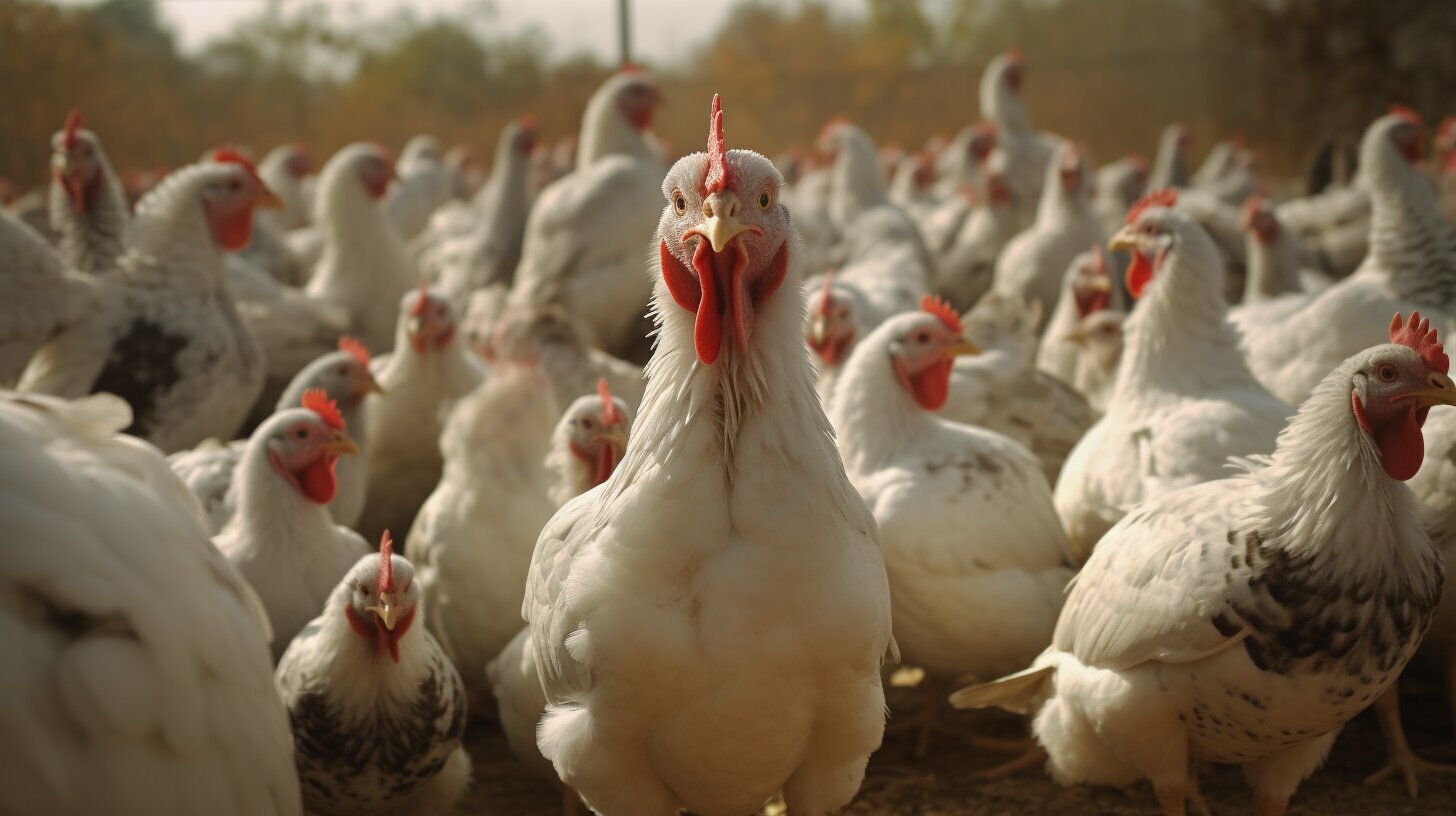Do Turkeys Need Nesting Boxes? Complete Guide

Table of content:
Raising turkeys for eggs or meat is becoming an increasingly popular endeavor for small farm owners and homesteaders. However, providing the proper housing and nesting conditions for your flock is essential to their health and productivity. Many turkey keepers wonder if they need to provide nesting boxes for their birds or if turkeys can simply nest on the ground or floor of the coop. In this article, we’ll explore the benefits of nesting boxes for turkeys and best practices for setting them up.
Why Nesting Boxes Are Recommended for Turkeys
While turkeys can technically nest on bare ground, providing nesting boxes offers some key advantages:
Safer Egg Laying
Nesting boxes give turkeys a dedicated space to lay their eggs, keeping the eggs cleaner and reducing the chance of breakage. Turkeys nesting on open ground often have higher rates of dirty and broken eggs.
Reduced Broodiness
Broody hen turkeys who want to incubate a nest of eggs will often do so in a nesting box. This allows you to collect the eggs easily. Without boxes, broody turkeys may hide their nests across your property.
Easier Monitoring
With designated nesting boxes, you can quickly check for new eggs laid each day. Tracking egg production is much more difficult when turkeys nest in random spots.
Protection from Predators
Enclosed nesting boxes help protect turkey hens and their eggs from predators like raccoons, opossums, and snakes that may enter the coop. Open ground nests are very vulnerable.
Prevent Overcrowding
Too many turkeys jostling for nesting space can lead to fighting and injured birds. Boxes give each hen her own private egg-laying spot.
For small farm flocks, most turkey keepers find that providing nesting boxes leads to better egg yields and turkey well-being. The boxes don’t need to be fancy – just enclosed spaces filled with nesting material.
Nesting Box Size Recommendations
Turkey hens are much larger than chickens, so they require more spacious nesting boxes with these recommended dimensions:
- Box floor area: 12-16 inches square
- Height: 12-14 inches
- Depth: 10-12 inches
This allows the hen enough room to enter the box, turn around, and nest comfortably. Smaller boxes may deter hens from using them.
For heritage breed turkeys that are very large, you may need to construct boxes up to 18-20 inches square. Slanted roofs are also a good idea to prevent the turkeys from roosting on top.
Number of Nest Boxes Per Turkey
The general recommendation is to provide one nesting box for every 1-3 hens in your flock. Turkeys are somewhat territorial about their nest sites. Having multiple boxes prevents too much competition and fighting over preferred spots.
Of course, the number of boxes can be scaled up or down based on:
- Coop size – Only include as many boxes as will reasonably fit.
- Flock size – More boxes for larger flocks, fewer for just a couple of turkeys.
- Hen temperament – Docile hens may share boxes more willingly than aggressive ones.
Monitor your turkeys and increase boxes if you notice hen fights or eggs laid outside of boxes. Decrease if boxes go unused. Finding the right box number takes some adjustment.
Nest Box Materials and Filling
Turkey nesting boxes don’t need to be elaborate constructions. Simple wood boxes or plastic buckets/crates make fine nesting sites.
The interior of the boxes should be filled with nesting material like:
- Wood shavings – Absorbs moisture and insulates eggs.
- Straw – Provides cushioning for the eggs.
- Sand – Hens will dig out a “nest” in the sand.
- Dirt/soil – Some hens prefer to nest directly in dirt.
- Hay – Comfortable loose nesting material.
Avoid using materials like fabric scraps, feathers, and cotton that can tangle around turkey feet and legs.
Line the boxes with 4-6 inches of nesting substrate. Keep them filled so turkeys always have sufficient material to dig out nesting hollows.
Where to Position the Nesting Boxes
Look for these factors when deciding where to place turkey nesting boxes:
- Low traffic area – Hens want a quiet, private place away from flock activity. Don’t put boxes in main coop walkways.
- Semi-enclosed space – A curtained or partly walled off nesting area works well. Hens shy away from fully open boxes.
- Accessible – Ensure boxes are at ground level. Turkeys don’t use elevated boxes like chickens do.
- Shaded – Turkeys favor nesting in shady spots away from direct light. Don’t place boxes in brightly lit areas.
- Well-ventilated – Good airflow keeps boxes dry. Dampness can lead to moldy eggs.
- Safe from predators – Situate boxes away from any openings or gaps where predators could enter.
Pay attention to spots in the coop or barn where hens currently try to nest, and place boxes in similar areas. Their instincts guide them to sites that feel secure.
Getting Turkeys to Use the Nesting Boxes
It can take some time for turkeys to grow accustomed to using designated nesting boxes, especially if they nested on open ground previously. Here are some tips to encourage box use:
- Introduce boxes early – Get poults exploring boxes at 4-8 weeks old so they become familiar with them.
- Bait boxes with treats – Place favorite foods inside to attract them into the boxes.
- Block open areas – Limit open ground nesting spots by covering dirt or using boards to block access.
- Collect eggs promptly – Don’t let eggs accumulate outside boxes. Quickly placing them in boxes trains hens.
- Get a “trendsetter” – One hen nesting in a box early on will influence others to use it too.
- Be patient – Give hens time to adjust. Reassess if boxes remain unused after the first few weeks of egg laying.
With some coaxing during the transition, most hens will consent to nesting in boxes. Just be prepared to experiment a little if issues arise.
Caring for Turkey Nesting Boxes
To keep your turkey nesting boxes clean, dry, and appealing for layers:
- Add fresh bedding weekly – Rake out soiled material and replenish with clean substrate.
- Check for pests – Remove any insect or rodent infestations immediately.
- Wash annually – Do a thorough cleaning and disinfecting at the end of each laying season.
- Open lids daily – Flip up box lids to improve ventilation and drying. Reduces dampness.
- Inspect for damage – Repair or replace any boxes with broken sides, floors, etc.
Proper turkey box maintenance results in healthier birds and eggs. It also makes the unpleasant job of cleaning boxes much easier.
Brooder Boxes for Turkey Poults
In addition to nesting boxes for adult turkeys, you may want special “brooder boxes” for young poults being raised without a broody hen. These provide extra warmth and protection as an alternative to a traditional brooder lamp.
Brooder boxes should have:
- A 250-watt infrared heat lamp bulb mounted safely on one side
- Bedding material like pine shavings for traction
- High, ventilated sides to contain the poults
- A wire mesh top so poults can’t perch under the heat lamp
- A lift-off lid for easy access and cleaning
The enclosed space helps keep poults warm during the first 6-8 weeks of rapid growth. Some brooder boxes even have self-regulating heaters to maintain an ideal interior temp of 90-95°F.
Final Thoughts
Providing proper nesting conditions for your turkeys is an important part of raising a productive, healthy flock. Boxes offer benefits over open ground nesting and are recommended for most small turkey flocks. Size the boxes appropriately, allow 1-3 boxes per hen, and place them in secure, favored nesting areas within the coop. This will lead to higher egg yields and less broody hen problems. Put in the effort to get turkeys using boxes early on, and you’ll reap the rewards with each season’s hatch.
Welcome. I’m Adreena Shanum, the proud owner of this website, and I am incredibly passionate about animals, especially poultry. I founded adreenapets.com as a labor of love, stemming from my desire to share my knowledge and experiences with poultry enthusiasts worldwide.




